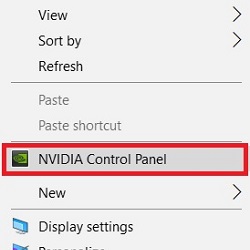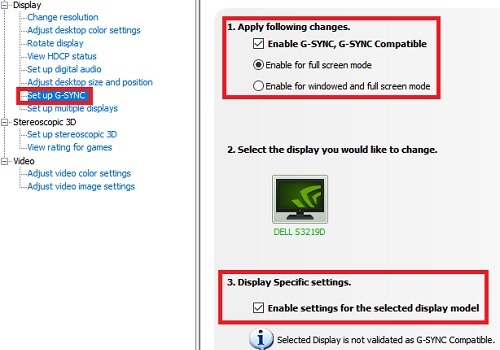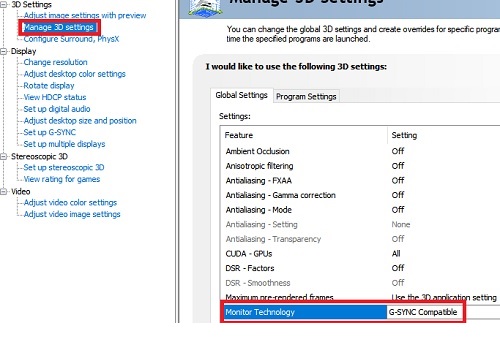This guide will demonstrate how to enable NVIDIA G-Sync on a Windows PC. G-Sync is a feature found in some gaming monitors. G-Sync creates a better gaming experience as it eliminates screen tearing and minimizes display stutter and input lag.
1. Make sure the monitor supports NVIDIA's G-Sync technology - a list of supported monitors at the time of this article can be found on Nvidia's website.
2. Make sure a DisplayPort cable is being used - G-Sync is only compatible with DisplayPort. or HDMI 2.1 (older HDMI versions do not work!). You cannot use converters or adapters. DVI and VGA are not supported.
3. Right click on the desktop background and select NVIDIA Control Panel from the list.

4. Under the Display tab on the left side of the NVIDIA Control Panel, choose Set up G-Sync, followed by Enable G-Sync, G-Sync Compatible checkbox. Note: If the monitor has not been validated as G-Sync Compatible, select the box under Display Specific Settings to force G-Sync Compatible mode on. See the warning NOTE at the end of the article before proceeding.

5. Under the Manage 3D Settings tab on the left side of the NVIDIA Control Panel, make sure Monitor Technology is set to G-SYNC.

6. G-Sync Compatible Mode is now enabled.
NOTE: If the monitor supports VRR (Variable Refresh Rate) technologies but is not on the list above, use caution before proceeding. It may still work, however there may be issues when using the technology. Known issues include blanking, pulsing, flickering, ghosting and visual artifacts.